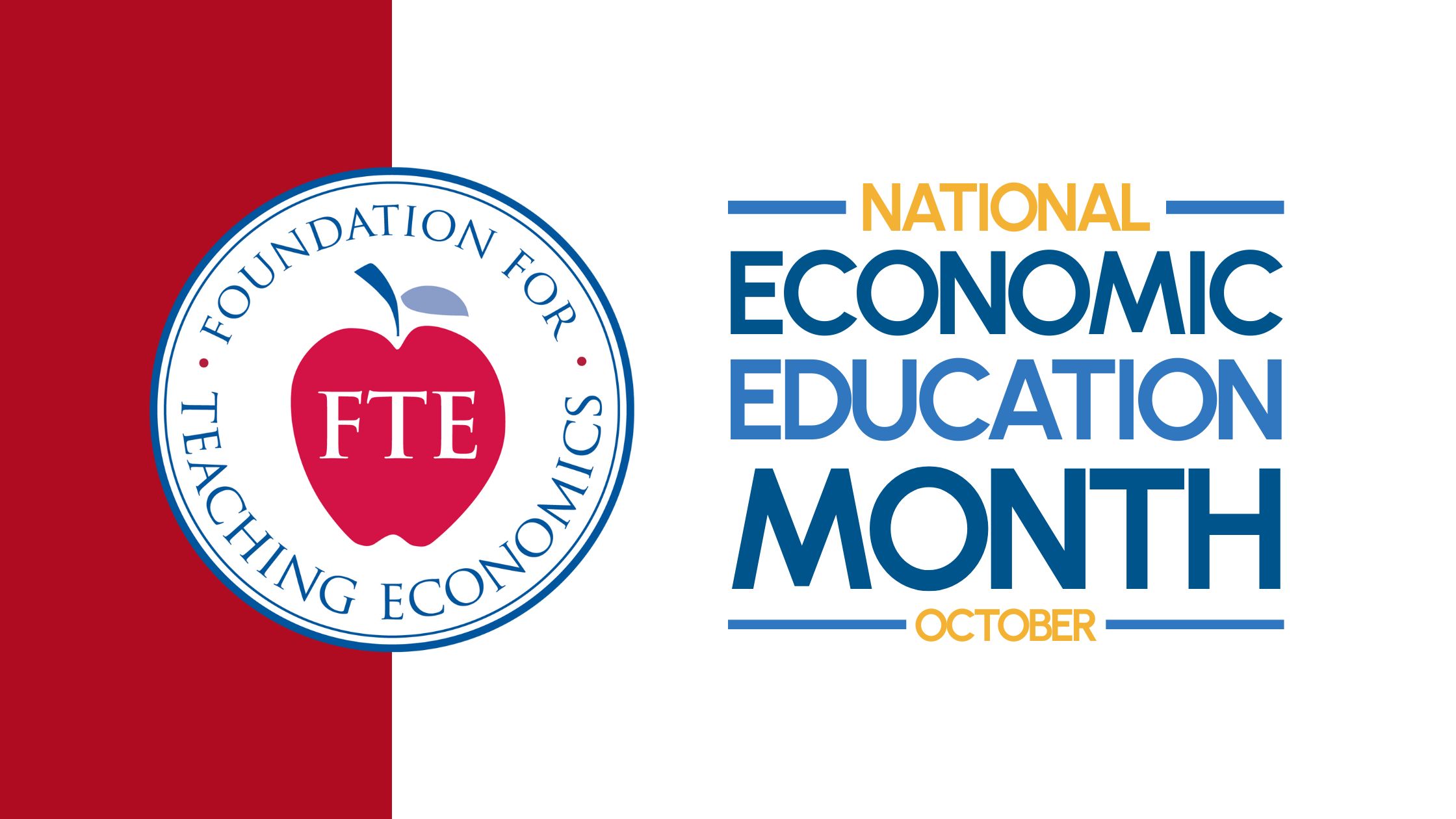International Trade — Part II — Exchange Rate Determination and Implications
- >
- Teachers
- >
- Teacher Resources
- >
- Lesson Plans
- >
- Right Start in Teaching Economics
- >
- International Trade — Part I…
Lesson Purpose:
Improvements in technology and transportation mean that trade is increasingly global in nature. This lesson looks first at the mechanics of exchange in world markets and then at some of the issues nations face as a result of the international character of trade.
Again, the basics matter. How, exactly, does an American citizen, using dollars, buy a car from a Japanese company that uses yen? “Who” decides what the exchange rate is? Students who understand how prices emerge from market transactions can, with guidance, readily transfer that understanding to currency markets and exchange rates. De-mystifying the exchange rate is an important first step in demystifying international trade.
Next is the issue of accounting. How do we measure trade? What exactly is a trade deficit? Balance of payments accounting, opens the door to appreciation of the full picture of trade – trade that includes not only the current account, comprised of goods and services, but also the capital account, the trade in financial assets that receives less media coverage.
Then there is the contentious issue of international trade and jobs. It seems benign to say that “trade allocates resources to their most valuable uses,” until the resource in question is labor. The on-going process of job-creation, job-destruction and job-movement means that some individuals are adversely affected by international trade – and that tempts politicians to try come to the rescue. Trade policies that create groups of winners and losers complicate the picture, and may increase misperceptions of the nature of international exchange. Again, economic reasoning can help us look for solutions that don’t throw out the benefits of trade.
Finally, in a dynamic global economy, currency values fluctuate naturally with supply and demand, and the fluctuations may influence trade patterns. Through their central banks, governments may adopt policies designed to ‘guide’ or ‘target’ their currencies’ values relative to those of other nations, and these policies have employment and income impacts.
This lesson, then, builds on the basics of trade developed in Topic 13, using fundamental tools of economic reasoning like comparative advantage, opportunity cost, and market analysis to clarify issues that arise from the increasingly global nature of trade.
Key Terms:
| exchange rate | balance of trade | trade deficit | depreciation |
| fixed exchange | capital account | trade surplus | appreciation |
| gold standard | current account | devaluation | |
| floating exchange |
Content Standards:
Standard 5: Students will understand that: Voluntary exchange occurs only when all participating parties expect to gain. This is true for trade among individuals or organizations within a nation, and among individuals or organizations in different nations.
Benchmarks:
grade 12:
- A nation pays for its imports with its exports.
- When imports are restricted by public policies, consumers pay higher prices and job opportunities and profits in exporting firms decrease.
Standard 6: Students will understand that: When individuals, regions, and nations specialize in what they can produce at the lowest cost and then trade with others, both production and consumption increase.
Benchmarks:
grade 8:
- Like trade among individuals within one country, international trade promotes specialization and division of labor and increases output and consumption.
- As a result of growing international economic interdependence, economic conditions and policies in one nation increasingly affect economic conditions and policies in other nations.
grade 12:
- Two factors that prompt international trade are international differences in the availability of productive resources and differences in relative prices.
- Transaction costs are costs (other than price) that are associated with the purchase of a good or service. When transaction costs decrease, trade increases.
Standard 7: Students will understand that: Markets exist when buyers and sellers interact. This interaction determines market prices . . .
Benchmarks:
grade 8:
- An exchange rate is the price of one nation’s currency in terms of another nation’s currency. Like other prices, exchange rates are determined by the forces of supply and demand. Foreign exchange markets allocate international currencies.
grade 12:
- When the exchange rate between two currencies changes, the relative prices of the goods and services traded among countries using those currencies change; as a result, some groups gain and others lose.
Standard 13: Students will understand that: Income for most people is determined by the market value of the productive resources they sell. What workers earn depends, primarily on the market value of what they produce and how productive they are.
Benchmarks:
grade 12:
- Changes in the structure of the economy, the level of gross domestic product, technology, government policies, and discrimination can influence personal income.
- Changes in the prices for productive resources affect the incomes of the owners of those productive resources and the combination of those resources used by firms.
- Changes in demand for specific goods and services often affect the incomes of the workers who make those goods and services.
Session Objectives:
- Review why international trade occurs, and the similarities and differences in international and domestic trade. Emphasize comparative advantage – and that the comparative advantage lies in producers, not countries.
- Explain that many of the contemporary “issues” surrounding trade and trade policy arise from a misunderstanding of the nature and mechanics of international trade.
- Explain / demonstrate how international currency markets work and how exchange rates emerge from supply/demand interactions.
- Describe how trade between nations is measured.
- Describe how trade payments take place.
- Demonstrate the operation of international currency markets.
- Differentiate among various methods (historical and contemporary) used to determine exchange rates: floating, fixed, “pegged to dollar,” managed, etc.
- Discuss how China’s managed exchange rate policy affects trade.
- Explain how central banks can “shore up” the value of a currency. Explain the difference (and to whom) between a “weak” dollar and a “strong” dollar.
- Explain / demonstrate balance of trade accounting, including:
- current account and
- capital account. (Emphasize capital account. Tie back to session on Fed and funding of U.S. federal deficit.)
- Discuss the advantages (and to whom) of U.S. trade surplus / trade deficit / balanced trade account.
- Discuss the role of trade in changing productivity and the impact of trade on the size and composition of labor markets.
- Discuss and provide examples of the economic effects of changes in exchange rates on income and employment.
- Identify winners and losers when the U.S. engages in trade with nations where wage rates are much lower than ours.
Key Content:
- The basis for international trade is the same as the basis for domestic trade: traders specialize in their comparative advantage (their least-cost production alternative).
- Government trade policies may alter comparative advantage.
- The value of a nation’s currency in international trade is determined by the supply of and demand for the currency in currency exchange markets.
- Some nations set or manipulate the value of their currencies on the international exchange.
- A nation’s imports are financed by its exports – either of products or capital assets.
- The balance of trade always balances.
- Current account deficits/surpluses are offset by capital account surpluses/deficits.
- Different individuals, businesses, and groups within the economy reap benefits or bear burdens depending on the composition of the trade balance. As a result, many groups pressure government to adopt trade policies in their favor.
- As in local labor markets, wages in international labor markets reflect the productivity of workers. Lower wages indicate lower productivity.
- The migration of particular jobs from one country to another is indicative of resource flows that result from increasing specialization and division of labor, and from differences in the productivity of workers from different parts of the world.
Mythconceptions:
- Lower wages in some countries harm countries with higher wage rates.
- Exchange rates are fixed and do not change.
- (Because our currency is backed by gold) payments between countries engaged in international trade are made in gold.
- People in other countries want/keep U.S. dollars.
- The U.S. trade deficit is a bad thing.
- Trade causes a reduction in the number of jobs in the U.S.
Frequently Asked Questions:
- If trade is based on comparative advantage, why do we import some things that we already produce? (For example, since we import cars and produce them domestically, do we have a comparative advantage in cars or not?)
- Why do some people / governments / organizations dislike international trade?
- How do purchases of foreign products take place? What are the mechanics of the exchange when different currencies are involved?
- How are exchange rates determined?
- Why do exchange rates change?
- How is trade affected when a country’s currency appreciates/depreciates? What is the impact on the home country? On the trading partner?
- How do currency exchange rates impact employment and income?
- What is meant by a “strong dollar”? a “weak dollar”? Is one better than the other? For whom?
- How do countries keep track of trade with other countries?
- Doesn’t trade with poorer countries hurt American workers?
- Why are regional trading alliances (like NAFTA) established, and are they a good thing? Are there winners and losers as a result alliances like NAFTA and the EU?
- Why was the EU established? Is it successful? (How do we know?)
- What do people in other countries do with American dollars?
- What does it mean when Latin American countries “dollarize” their currency, and how does it affect our trade with them?
- If free trade is such a good thing, why do so many world-scale trade conferences fail to agree to eliminate trade barriers?
Classroom Activity Options
- “Foreign Currency and Foreign Exchange” is an engaging classroom activity that demonstrates how currency markets generate exchange rates. Directions and materials for the activity are available on the FTE website at:
- Economic Reasoning Principles
- Incentives Unlock the Mysteries of Human Behavior
- Economic Reasoning Quiz
- The Economic Way of Thinking
- Value of Economic Reasoning … Any Place, Any Time
- The Magic of Markets: Trade Creates Wealth
- Foreign Currencies and Foreign Exchange
- Trade Offs and Opportunity Cost
- Demand, Supply and the Market
- Teaching Students How Markets Work — Market Changes, Price Determination and Elasticity
- Market Structures and Competition
- Economic Goals and Measuring Economic Activity — Goals Simulation
- Understanding the Role and Importance of the Public and Private Sectors
- Inflation and Unemployment
- Fiscal Policy
- Fiscal Policy
- Money and the Banking System — The Mechanics
- Money and the Banking System – The Federal Reserve and Monetary Policy
- International Trade — Part I — Why People Trade
- International Trade — Part II — Exchange Rate Determination and Implications

From Student to Leader: Bret’s Transformative Experience at the EFL Program at UC Berkeley
November 13, 2025 Bret Chen had always been drawn to the world of business. As a high school junior from…

Aditi Gandhi: Economics for Leaders Virtual Program Alumni
October 6, 2025 Aditi sat at her desk in Dubai, staring at her computer screen, her fingers hovering over the…

October is National Economic Education Month. We need it more than ever.
The Washington Examiner By Ted Tucker October 2, 2025 A fundamental economic principle is that voluntary trade creates wealth, and the…
